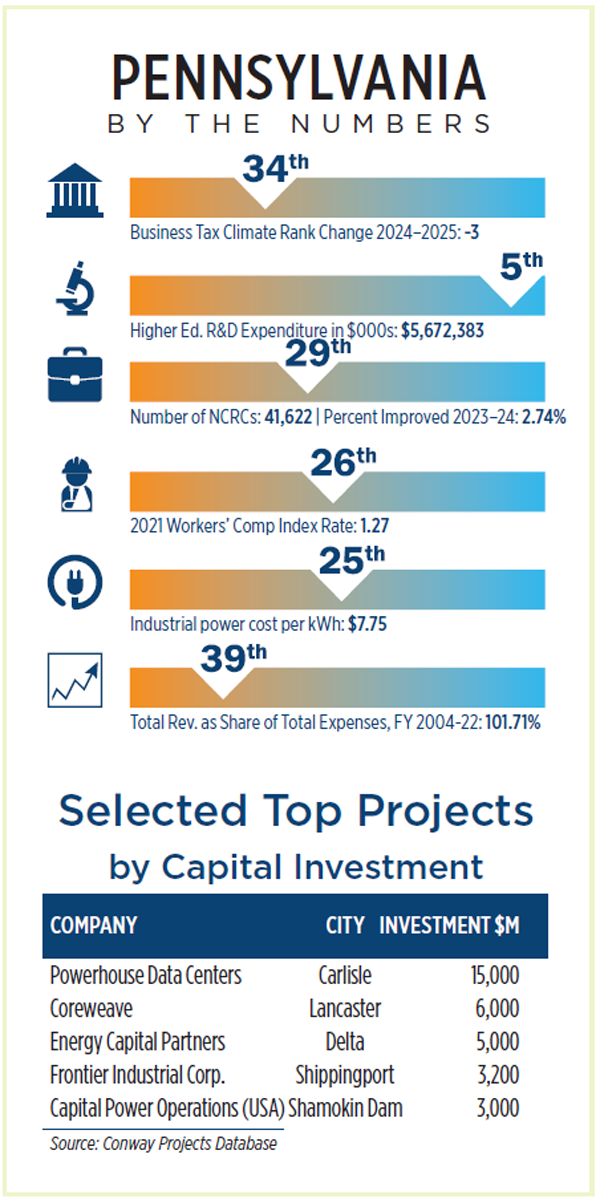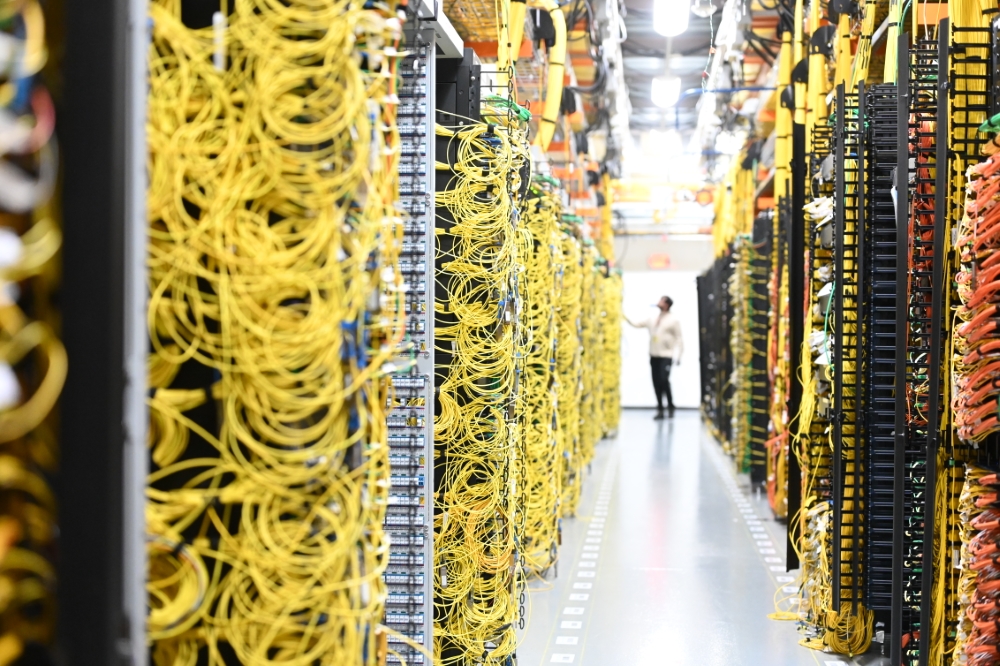In Pittsburgh in July, on the eve of President Donald Trump revealing over $90 billion in innovative private-sector energy and AI investments in the state, the electricity in the air was palpable.
In the city’s Strip District, I attended the AI Horizons Pittsburgh Preview Summit at the HQ of homegrown self-driving technology company Aurora Innovation, where leaders from local companies — Abridge, Astrobotic, Aurora, Carnegie Robotics, CNX, Eos Energy and Gecko Robotics — spoke to the capabilities of Pittsburgh’s thriving tech ecosystem.
Conversations drew consensus on the strength of the region’s talent pool, industry expertise and higher education institutions; its willingness to support startup companies; and energy resources and an overarching collaborative ecosystem as powerful tools that have kept these companies locked in on the Pittsburgh region.
“There’s this kind of long legacy built into Pittsburgh, which is a combination of people looking forward and a ‘get it done’ attitude that I don’t think is everywhere,” said Aurora Innovation Co-Founder and Chief Scientist Drew Bagnell. “I think that is a variable for a lot of people. Concentration and availability of talent and quality of life are big factors.”
What’s To Come
The next day, economic development officials, top corporate executives, local and national government leaders gathered three miles away at the inaugural Pennsylvania Energy and Innovation Summit, which took place at the birthplace of AI, Carnegie Mellon University (CMU).
Top project investments announced at the summit were led by Blackstone’s $25 billion, 3,000-job investment into data center and energy infrastructure developments in northwest Pennsylvania. This deal includes a new joint venture with PPL Corporation for power generation. Meanwhile PPL plans a $6.8 billion, 3,400-job investment of its own to expand grid capacity and modernize transmission in various communities.
First Energy followed Blackstone with a $15 billion investment to expand power distribution and grid enhancements that will impact 56 Pennsylvania counties, while Pennsylvania Data Center Partners and Powerhouse Data Centers plan to construct a $15 billion, 1.3-gigawatt three-campus data center hub near Carlisle. An agreement in principle between Homer City Redevelopment and EQT Corporation will see the purchase of $15 billion worth of Pennsylvania natural gas for more than 4 gigawatts of power generation to the Homer City Redevelopment site, creating 1,000 jobs.
There was a healthy $56 billion mix of power and energy investments. Among them:
- Brookfield and Google announced a $3 billion, 20-year deal to repower two hydropower facilities.
- Capital Power is investing $3 billion to upgrade and expand a gas facility in Shamokin Dam, creating 30 new jobs.
- Constellation Energy plans a $2.4 billion investment to uprate the Limerick nuclear power plant, creating 340 megawatts of power capacity and 3,000 new jobs.
- Equinor will invest $1.6 billion to boost natural gas production at the company’s Pennsylvania facilities, while exploring opportunities to link gas to data centers.
- Frontier Group will bring a $3.2 billion natural gas power station transformation to the former Bruce Mansfield coal power plant in Shippingport, creating 300 jobs
- Westinghouse Electric Company plans to deliver 10 nuclear power plant reactors in the U.S. with construction to begin by 2030, creating 15,000 jobs and $6 billion in value in Pennsylvania alone.
Remaining data center investments came from CoreWeave for a $6 billion, 300-megawatt data center in Lancaster and a $5 billion data center planned at the York II Energy Center from Energy Capital Partners.

“We as a company service over 60% of the world’s operating nuclear fleet right here from our headquarters in the Pittsburgh region.”
— Westinghouse Interim CEO Dan Sumner, July 15, 2025, speaking to the company’s plan to deliver 10 AP1000 reactors in the U.S., driving $75 billion of value across the country and $6 billion in Pennsylvania alone
With thousands of jobs on the horizon, funding toward talent development stretches from the classroom to an incubator. AI startup Anthropic committed $1 million to the CMU CyLab Security and Privacy Institute’s picoCTF program, which teaches middle and high school students about cybersecurity. The company will supply another $1 million to drive new energy research at CMU by 2028. Meta looks to support CMU-backed startups alongside the Swartz Center for Entrepreneurship, providing $2.5 million to fund startups targeting industries such as energy infrastructure, health care and defense.
Google introduced a new “AI Works for PA” program that will provide free skills training to 1 million residents and businesses in the state, also awarding a grant to the Electrical Training Alliance to train new workers and apprentices through AI-integrated curriculum. First Energy’s multibillion-dollar investment includes an expansion of its apprenticeship program in partnership with the International Brotherhood of Electrical Workers.
Amazon’s Early Arrival
Weeks prior to the big event at CMU, Amazon Web Services and Governor Josh Shapiro announced the company would invest $20 billion to expand the company’s statewide generative AI and high-tech cloud infrastructure reach, beginning with two campus developments in Luzerne County’s Salem Township and the Falls Township in Bucks County.
In an interview, Amazon Vice President of Economic Development Roger Wehner says the company is in the midst of its early planning phases for these locations and several more in the pipeline that are not yet announced.
“Amazon spends a lot of time listening to and understanding a community’s needs and priorities,” says Wehner. “In Pennsylvania, we carefully chose the data center locations that provided robust utility infrastructure, a skilled workforce and opportunities to support public services through increased tax revenue.”
A key decision driver rests in the voices of AWS customers and where they’d like to see expansion happen. Whether it be to meet rising data infrastructure demands or reducing latency for end customers in current or new regions, input from local communities becomes essential too.
“When we think about specific spots, we look at all aspects of data center development and operations, which includes things like land availability, our proximity to carbon-free energy, as well as understanding local communities’ interests and needs,” says Wehner.
While final investment decisions may be inked inside board rooms, AWS boots on the ground ensure local leadership, talent, K-12 schools, higher education institutions and community colleges are prepared to support the project’s longevity.Working alongside local communities allows AWS to develop curriculum and training programs within community colleges and trade schools for critical roles including cloud engineers, electricians and fiber-optic cable splicers. Wehner says the state’s extensive roster of educational institutions creates a favorable environment for advancing technological development.

“Additionally, the state government showed willingness to partner with Amazon on workforce development initiatives including data center technician training programs at local colleges and STEM programs for K-12 students,” he says.
As part of the massive investment, which will create 1,250 new jobs throughout the state, Amazon has committed to launching the Amazon Community Workforce Accelerator, Data Center Operations and Fiber Optic Technician Programs, Fiber Optic Fusion Splicing Workshops, Infrastructure Workshops for Educators and the AWS Information Infrastructure Pre-Apprenticeship program.
To support future needs of the Salem Township site, Amazon has entered into a new power purchase agreement with Talen Energy to utilize 1,920 megawatts of carbon-free energy from the adjacent Susquehanna nuclear power plant. The duo also announced plans to build new small modular reactors in Pennsylvania to increase the plant’s output through uprates, ultimately adding net-new energy to the PJM Interconnection grid.
Managing data center water use is another priority. As of 2024, Amazon was 53% of the way toward meeting its 2030 water positive goal. Since 2021, Amazon has seen a 40% improvement in its global data center Water Usage Effectiveness, which currently stands at 0.15 liters per kilowatt-hour.
Previously, Amazon partnered with Pennsylvania-based Stroud Water Research Center for a water replenishment project in the Chesapeake Bay watershed. With input from local farmers the project continues to aid in the reduction of agricultural runoff, increase groundwater recharge and enhance the watershed’s overall health.
“We see in Pennsylvania a partner that shares our vision for sustainable community-centered growth,” says Wehner. “We’re committed to being a long-term partner in Pennsylvania’s success, and we look forward to continuing to grow for the years ahead.”

